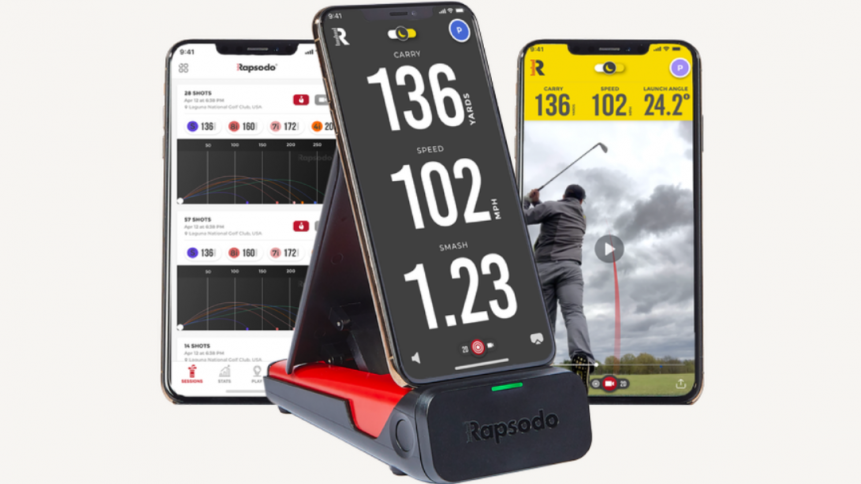Sports tech: iPhones play to win

Data has been part of the coaching fabric of professional sports for some time – helping teams spot up-and-coming talent and develop players into future championship-winning stars. What’s changing – due to the rise of devices such as Apple’s iPad and increasingly the Cupertino, US, firm’s newer iPhones that may have hit the sweet spot in terms of screen size – is the hardware that’s necessary to gain an edge on the competition.
One company that’s noticed this trend is Rapsodo, whose ball-striking and pitching tech is used by all 30 Major League Baseball teams, as well as professional softball players, and has proven to be a big hit in the golfing community. In fact, golf is where the US-headquartered firm’s journey began as company founder Batuhan Okur put his engineering skills to use developing hardware that would help him to make the most of his sporting talents on the fairway. This prototype became the firm’s popular Mobile Launch Monitor, or MLM for short, which today is a sleek smartphone (or tablet) cradle-shaped unit (containing doppler radar technology) that works in combination with the optics available on Apple’s iPhone or iPad devices.
Tracking success
The radar provides accurate velocity data, whereas the camera gives valuable insight into other movements such as ball spin, and users have access to a wide range of stats including club speed, launch angle, smash factor (the ratio of ball speed to club speed), and more. In baseball, its metrics have brought a new level of granularity to measuring athlete performance. And the firm offers dedicated hardware for hitting and pitching.
The information is used by college and pro teams to make sure that players are at the top of their game – for example, by helping throwers to design a winning pitch. Other uses include health monitoring, aiding athletes that are coming back from injury to track their performance and make sure that players are at full strength before returning to competition.
“We keep a large database that gives users a rich historical view and serves as a valuable benchmarking tool,” Art Chou, General Manager at Rapsodo told TechHQ. Customers can use this data to track not just their own performance, but to also see how they stack up against competitors at a similar stage in their careers. “Baseball is one of the most data-centric sports in North America, “ Chou adds.
That’s not to say that other sports aren’t far behind, and the competition on-field is becoming closer at all levels, not just in the pro-game, which is good news for sports tech providers such as Rapsodo, and other firms, who offer a range of solutions at different price-points. And the rising sophistication of mobile devices plays into this.
Ready-made hardware platform
Today, thanks to the camera and video lenses that are available on smartphones and tablets, together with the high-resolution, fast-readout sensors that accompany them (and not to forget the pin-sharp displays for outputting results) – sometimes all that’s required is an app. And if additional hardware is needed, it can be made much smaller and cheaper as mobile devices become more capable. Customers enjoy the portability that smartphones bring, which is a boon for coaches as they can bring the technology to the player rather than the other way around.
Back in the day, when players had hitting sims on PC’s, solutions could be designed around that. But once everyone became used to technology that they could pack into a bag or carry in their pocket, there was no going back. “Today, customers always ask if we can give them ball-tracking data on a phone,” Chou explains – noting that even tablets are seen as too bulky by some users. The challenge for developers is no longer processing power, or even camera and video limitations, but screen size and finding ways to display all of the rich data feeds in a way that still makes sense to users and is quick to access.
It’s an observation that is changing the business model for firms, in the sports tech space and elsewhere. Rather than expensive hardware bundled with free services, providers – leveraging the power of smart devices that customers already own – are instead offering feature-rich subscriptions that play alongside more affordable accessories. These devices, such as the doppler radar in Rapsodo’s case, fill in any gaps in the sensing capabilities of the smartphones and tablets that increasingly underpin the hardware proposition and allow companies to address large markets.
Lab to market advice
Chou, who joined Rapsodo in 2017, has a long history of commercializing technology designed to improve athlete performance and continues to mentor firms through his work with Stadia Ventures – a ‘global sports innovation hub for entrepreneurs, industry partners and investors’. In terms of what’s required from founders, Chou finds that often people will have the right idea in matching their solutions to problems facing potential customers. The tricky part is being able to solve those problems at scale. “If the firm has to bring the solution on a one-to-one basis then it’s a consulting business,” he points out.
Whatever the business type, sports technology is having a field day thanks to the hardware built into our phones and tablets, supported by some clever auxiliary sensing and powerful data analytics that’s proving to be a winner for athletes and coaches.









